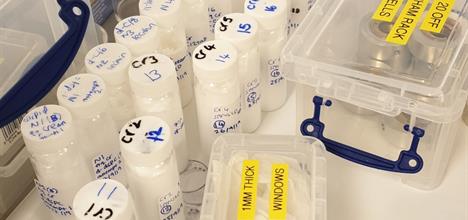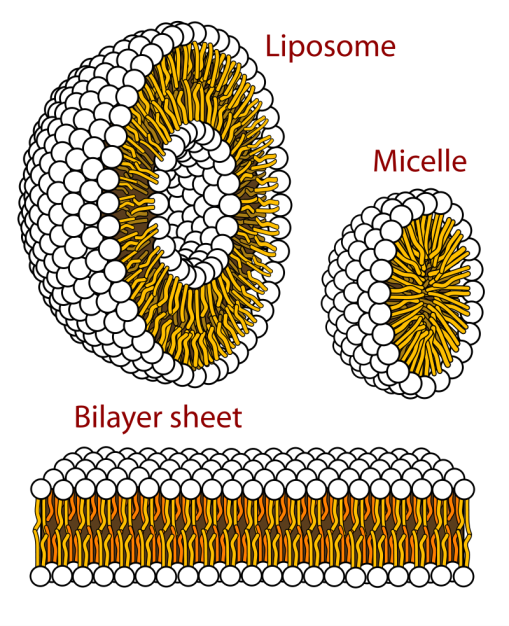Skin creams are emulsions of oil in water – similar to mayonnaise and salad cream. They have a variety of uses ranging from cosmetic applications to treatments for skin conditions like eczema and psoriasis. The ingredients essential for the formation and stability of the creams are oil, water, a surfactant – (read more about surfactants here) – and one or two co-surfactants. Scientists from King's College London and Manchester University, in collaboration with scientists at ISIS, have discovered that the microstructure of the creams is more complex than was previously thought.

'Our work has revealed that the textbook view of skin cream structure is, in some respects, rather naïve, and in other respects totally incorrect,' reported King's College London's Delaram Ahmadi at the American Chemical Society's national meeting in San Diego, US.
Together with David Barlow, also from King's College, and the University of Manchester's Jayne Lawrence, Delaram Ahmadi is the first to carry out detailed investigations of the molecular structure of skin creams using neutron scattering. Not only did they find the distribution of ingredients differs from what the textbooks say, they also discovered structures within the creams that had never been seen before.
 Delaram's team focused on a very simple, five-ingredient formulation containing paraffin, water, the surfactant sodium dodecyl sulfate (SDS), and co-surfactants cetyl and stearyl alcohol. By using ingredients synthesized in the Deuteration Lab at ISIS in which hydrogen atoms were switched for deuterium, they determined each component's molecular arrangement through neutron scattering using the sans2d instrument at ISIS – and carried out complementary x-ray scattering studies using facilities in the Materials Characterisation lab at ISIS.
Delaram's team focused on a very simple, five-ingredient formulation containing paraffin, water, the surfactant sodium dodecyl sulfate (SDS), and co-surfactants cetyl and stearyl alcohol. By using ingredients synthesized in the Deuteration Lab at ISIS in which hydrogen atoms were switched for deuterium, they determined each component's molecular arrangement through neutron scattering using the sans2d instrument at ISIS – and carried out complementary x-ray scattering studies using facilities in the Materials Characterisation lab at ISIS.
According to the textbooks, skin creams have surfactant molecules covering the oil droplets, which keeps them dispersed, and excess surfactants go to form stacks of bilayer membranes sandwiching water layers. However, Delaram's research suggests that this is not the whole picture.

While the researchers did find the textbook membranes, they also discovered an abundance of elliptical bilayer structures called bicelles. Delaram Ahmadi points out that these bicelles could potentially be used to encapsulate and deliver fat-soluble drugs.
'For the first time we reveal direct evidence not only for membrane-like structures but also for disk-shaped structures known as bicelles, which had never been seen before,' Delaram says.
In addition to helping make better skin cream, the improved model of the microstructure of water-oil emulsions could potentially yield new fat-soluble drug delivery techniques.
Click here to watch Delaram's ACS press conference https://www.youtube.com/watch?v=EqE-Uhe-zdE&list=PLLG7h7fPoH8L42YLDZk1aySuLs7aUV4iQ&index=13&t=0s
#OpenAccess
Click here to access the paper: https://www.nature.com/articles/s41598-020-61096-x.epdf?author_access_token
